The Pinay’s Guide To The Korean Skin Care Routine
by Chiara Quiocho / March 6, 2019
Maybe you don’t do the Korean skin care routine because it seems just too extra to do every day. 7 to 12 steps is a lot, we know. There are even several routines used within the Korean skin care routine already. Routineception!
What most people don’t understand about skin care is that it’s very individual. This means that even the most raved about product and routine might not work for you. People have different skin problems and different skin chemistry. That is why you should only add new products to your routine one at a time. This way, you can isolate which products cause adverse reactions or burning sensations. Chances are you’re allergic to something in that product – such as rose water, aloe vera or ferments – and need to avoid it.
That’s why rather than just following any old skin care routine guide, the real, effective method to achieving that stunning Korean glassy skin look is to find steps and products that address your specific skin problems. To help you decide your skin care routine, we came up with this guide to explain everything you need to know to look good for your oppa.
1. Oil Cleanser
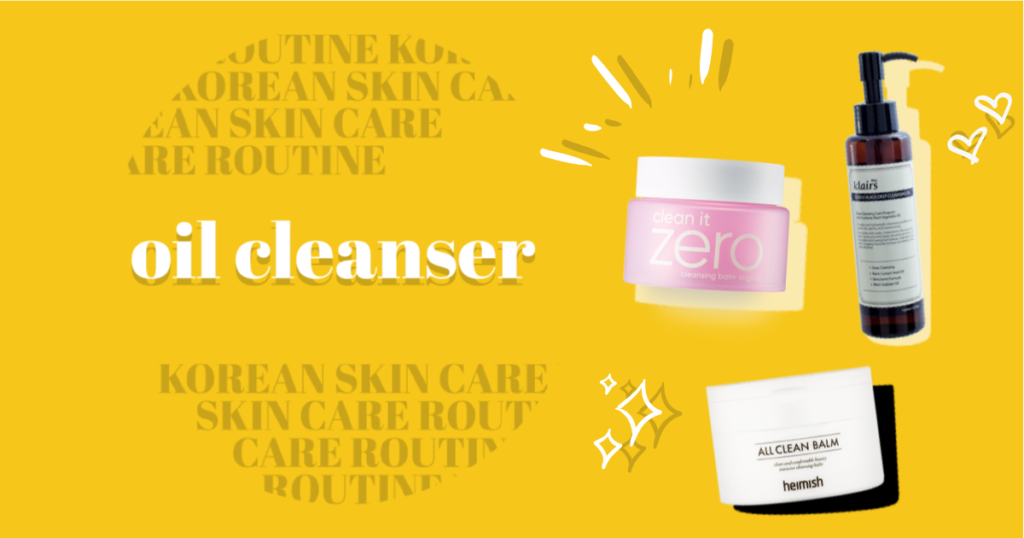
The first step of any Korean skin care routine is the oil-based cleanser. Oil cleansers are traditionally used for just makeup removal, but in Korean skin care, they’re a daily part of the double cleanse method. In double cleansing, you wash your face with an oil-based cleanser first for a deep clean of all the oils, sebum and sunscreen.
Recommended Holy Grails: Heimish All Clean Balm, DHC Deep Cleansing Oil, Klairs Gentle Black Deep Cleansing Oil, Clean It Zero Cleansing Balm Purifying
2. Foaming Cleanser
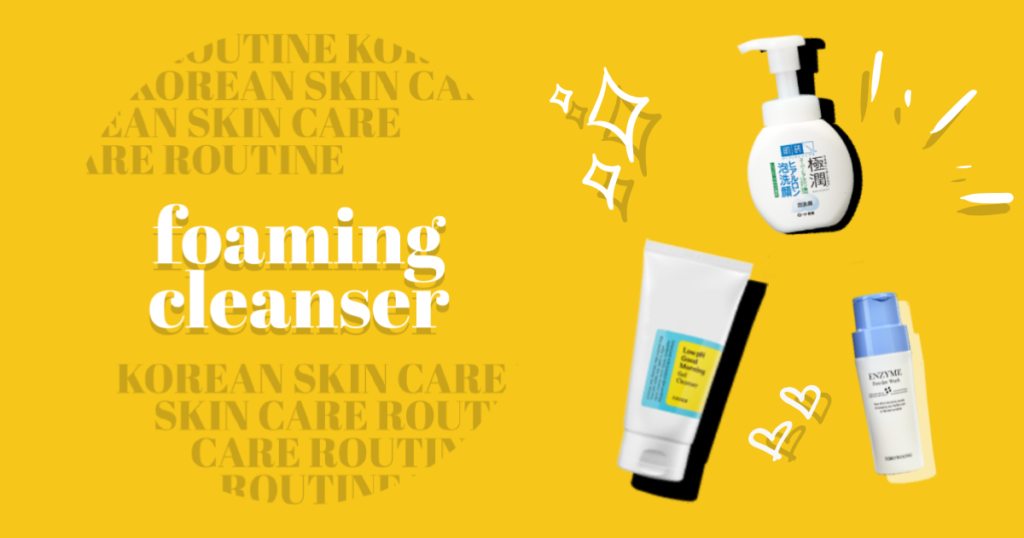
For the next step of the double cleansing method, wash your face with a water-based cleanser to remove dirt and sweat.
Use a foaming cleanser with a pH level around 5-6.5 (you’ll have to ask good ol’ Google for your favorite facial wash’s pH level). Maintaining a balanced pH level on your skin will protect your moisture barrier. Your moisture barrier is an outer portion of your skin that keeps water in and bad things, like dirt and irritants, out. If your face feels tight and sensitive after washing, you can damage your moisture barrier by using facial washes that are too high in pH.
The older you are, the harder it becomes for your skin to repair the moisture barrier, so it’s best to take care of your skin by opting for a low pH cleanser.
Tip: Avoid facial cleansers with microbeads. It might seem like you’re making your face squeaky clean, but microbeads cause microscopic cuts on your face, exposing your poor skin to even more bacteria.
Recommended Holy Grails: CosRx Low-pH Good Morning Cleanser (5.5 pH), Tosowoong Enzyme Cleanser (5.5 pH), Hada Labo Gokujyn Hyaluronic Acid Cleansing Foam (5.5 pH)
3. Acids
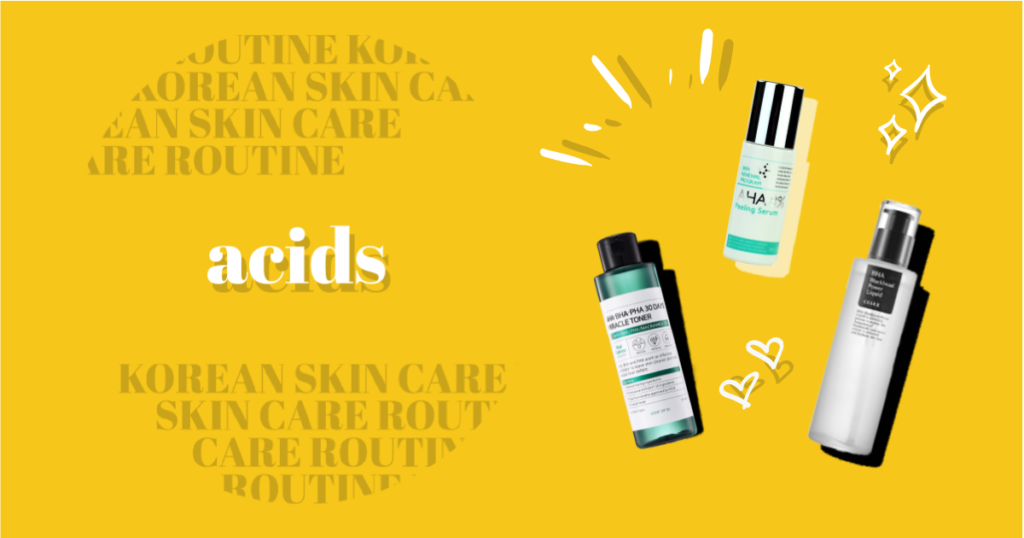
Don’t get scared away by that name! Acids are chemical exfoliators (so think of a konjac sponge or exfoliating wash but in liquid form) that are a godsend if you’re struggling with the texture of your face or you want to banish that acne outbreaks BE CAREFUL! Improper usage of acids can lead to nasty burns, peeling and even permanent damage to your face. Ease your face into using acids. Use them once a week at first. There are different kinds of acids, so look for gentler ones while you’re still a beginner.
There are three types of acids:
Beta Hydroxy Acids (BHA) – Having problems with blackheads or a bad case of acne? BHAs sink deep into your skin and de-clog your pores and degunk all the dirt underneath your skin. Because they provide a deep, thorough cleaning, they can be stripping and drying and are usually recommended more for people with oily skin.
Alpha Hydroxy Acids (AHA) – AHAs scrub the dead skin cells from your face, leaving a silky smooth complexion behind. These are perfect for smoothing over fine lines, blemishes, acne scars and pesky bumps called milia. Milia are actually accumulated dead skin cells trapped beneath the surface. Gross! However, AHAs increase sun sensitivity, making you more prone to sunburn. Use this at night or get ready to slather a lot of sunscreen on your face afterward.
Polyhydroxy Acids (PHA) – This is a relatively recent product in the skin care market. PHAs are the new generation of AHAs and are much milder than their predecessors. They only work their magic on the uppermost layer of your skin and draw water into your skin. Also, unlike AHAs, they don’t increase sun sensitivity. If you have dry or sensitive skin or are just starting with acids, this gentle exfoliator is the pick for you.
Furthermore, you might start breaking out immediately after using acids for the first time. Don’t worry! That’s your skin pushing out all the gunk and filth burrowed deep into your pores. This reaction is called purging. However, don’t worry! Purging only lasts for 2-4 weeks. If it goes on longer than that, you’re probably allergic to something in your acid.
Recommended Holy Grails: CosrX Blackhead Power Liquid, Mizon AHA 8% Peeling Serum, Some By Mi Miracle Toner
4. Toner
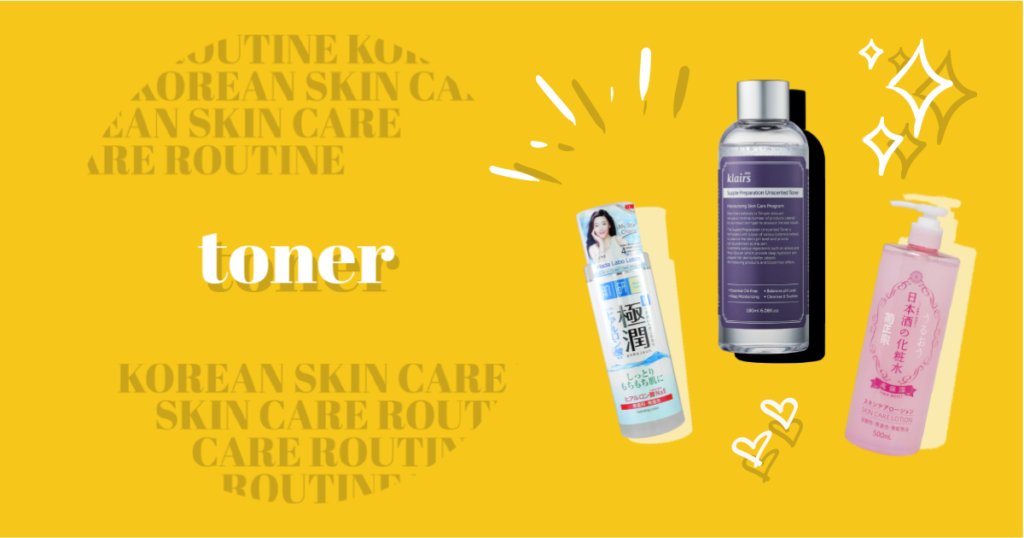
There are two types of toners.
Balancing toners are used to bring your face’s pH levels back down to the natural state. If your facial wash isn’t a good pH level, this is a must-have.
Hydrating toners, which are more popular in Japanese skincare, add an extra boost of hydration to your face. A popular in Korean skin care is the 7 Skin Method which is just applying your hydrating toner seven times for maximum hydration. That’s a lot (and some people abbreviate this step to only 3 layers), but AOA’s Seolhyun uses the 7 skin method, and her skin speaks for itself.
Recommended Holy Grails: Klairs Supple Preparation Toner, Hada Labo Gokujyun Lotion, Kikumasamune High Moist Lotion
5. Essence/Serum/Ampoule
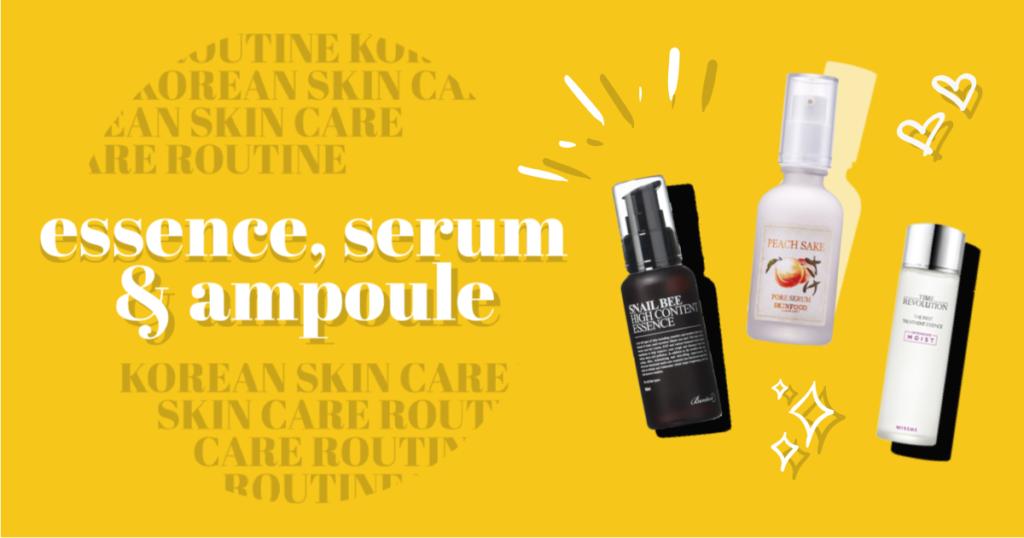
That’s because essences, serums, and ampoules are essentially the same. All of these are a direct shot of powerful ingredients and actives straight to your face. The lines tend to get blurred for this step. Did you know that Estée Lauder’s Advanced Night Repair Serum is called “brown bottle essence” in Korea?
You can differentiate essences as being lighter than serums, while ampoules are supercharged serums that pack a punch.
Confused? Well, bear with me because it kind of gets more complicated because some serums or essences use actives.
Actives are products that use ingredients that don’t just nourish your skin; they change your skin for the better. These powerhouses are concentrated doses that target specific concerns.
Actives go before your toner. You want to use this as the first step after washing because most actives need your skin to be acidic, (which means having a low pH, so some people use pH balancing toners), to be effective. These are some of the most popular and effective actives:
Vitamin C – Thought orange juice was used to keep colds away? Vitamin C should be your new skin care BFF. This powerhouse vitamin improves elasticity (goodbye sagging and wrinkles!) and brightens your skin. In Korean skin care, brightening isn’t the same as whitening. Brightening is all about getting rid of dark spots from sun damage for a healthy, glowing complexion.
Hyaluronic Acid – Korean skin care’s hydrating superweapon, hyaluronic acid takes moisture from the surroundings and draws it into the skin to keep your face hydrated throughout the day.
Niacinamide (B3) – This is your skin care superstar for an even skin tone. This vitamin brightens dark spots and blemishes, makes your pores less visible and helps retain moisture in your skin.
Another popular trend in Korean skin care is the First Treatment Essence (FTE). FTEs are just a lightweight serum or a thicker hydrating toner that use ferments to reduce pore size, makes dull skin a glow and a whole list of other benefits, depending on which one you use. What sets them apart is that the FTE should be the first step (as the name implies) after actives. FTEs contain ferments that prepare your skin, making your following products absorb much better while providing a heaping help of nutrients that your skin will love.
Recommended Holy Grails: Missha Time Revolution FTE, Benton Snail Bee Essence, Skinfood Peach Sake Pore Serum, Melano CC
6. Emulsion
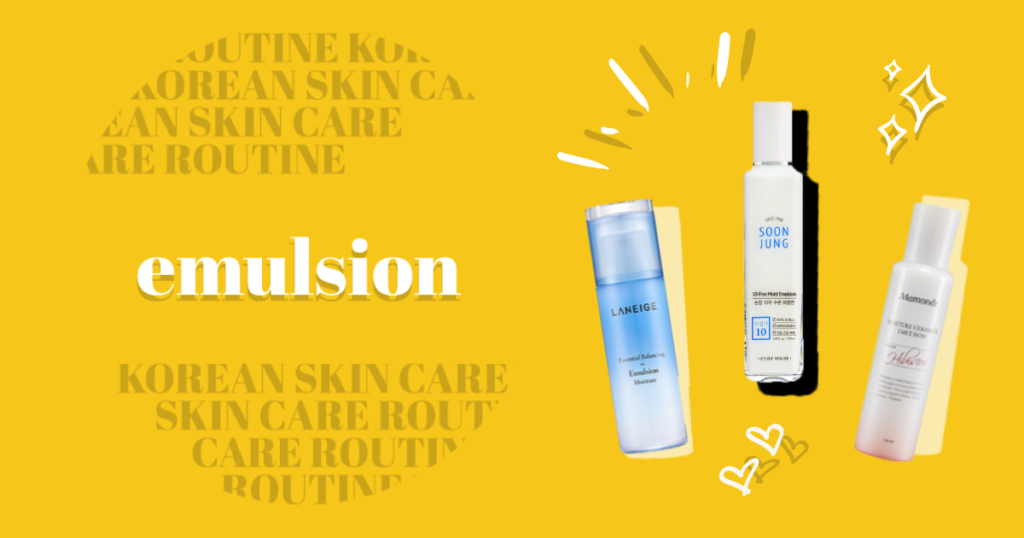
The skin care equivalent of a conditioner, emulsions soften your skin. This is not a necessity but if your skin feels too tight, then consider adding an emulsion for bouncy, supple skin.
Attention oily skin people: if you can’t find a moisturizer that works for you, you can use an emulsion in place of the moisturizer step since emulsions are almost like watery moisturizers.
Recommended Holy Grails: LANEIGE Essential Balancing Emulsion, Mamonde Moisture Ceramide Emulsion, Etude House SoonJung Free Moist Emulsion
7. Sheet Mask
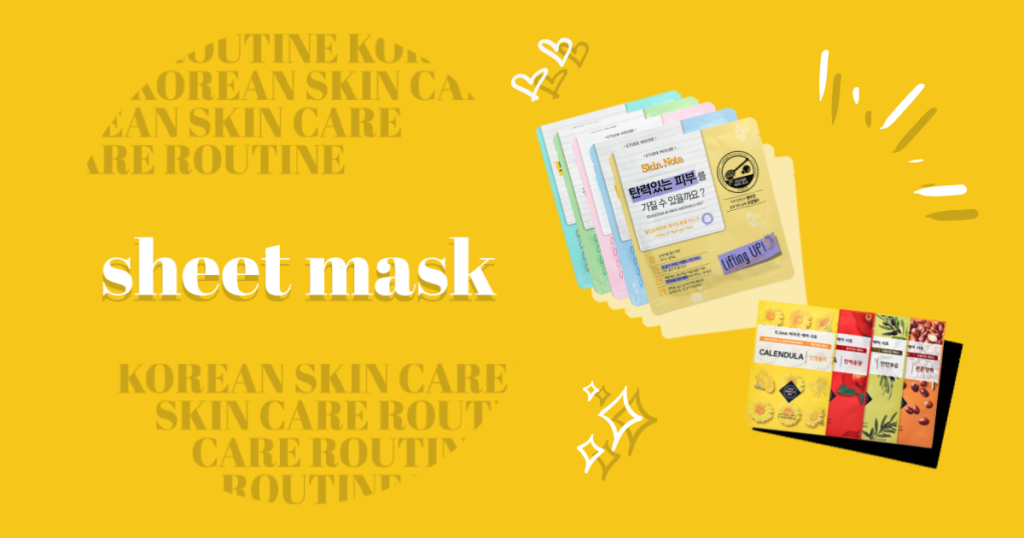
Probably the most famous part of the routine, the sheet mask is a fun way to unwind. A sheet mask is a more concentrated dose of serum. The masks allow the serum to soak deeper into your skin instead of evaporating.
Always check the ingredients of the skin care products you use. A lot of Korean sheet masks contain alcohol which is a no-no. Alcohol hastens aging, dries your skin up and weakens your poor moisture barrier.
Tip: If you like the sheet mask enough and there’s a serum version, getting the serum instead is more tipid.
Since sheets masks come in different “flavors,” pick one with ingredients that best address your needs! For example, snail masks are great for revitalizing aging and damaged skin. Lemon masks will brighten your complexion for those with uneven skintone. If you need deep moisture, honey or avocado masks are the way to go! Luckily, they’re more affordable than other products so you can try different ones out.
8. Eye Cream
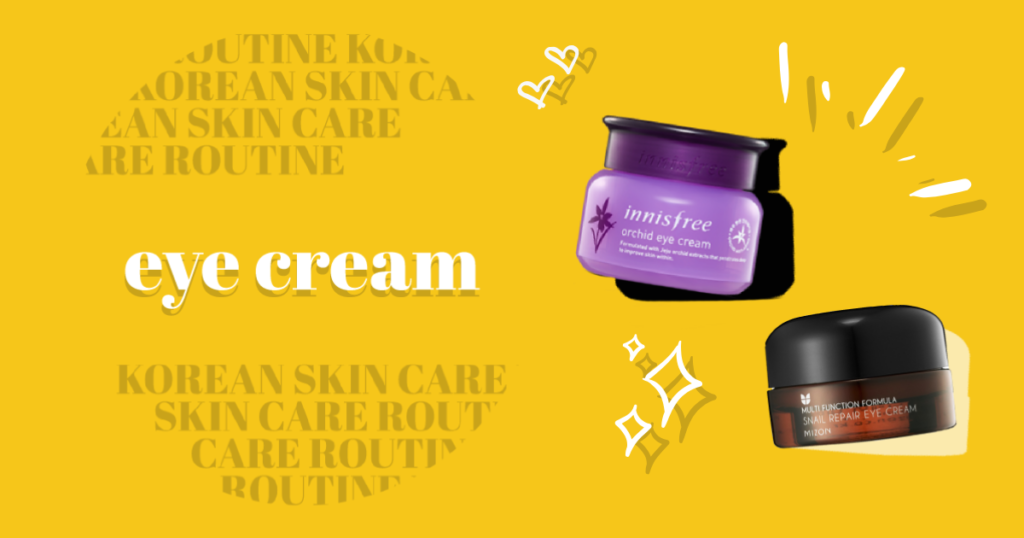
You don’t need eye cream if the rest of your products are gentle enough, but the skin around your eyes is thinner and more sensitive, making that area prone to showing age and fatigue. Eye creams are thicker and tend to be more targeted to address concerns like puffiness and wrinkles. Maybe you’ve been pulling all-nighters and now you have dark eyebags or fine lines. These problems will sashay away when you add an eye cream to your routine.
Always avoid rubbing your eyes. Tap the cream onto your skin with a finger to evenly spread it.
Recommended Holy Grails: Innisfree Orchid Eye Cream, Mizon Snail Repair Eye Cream, Elizavecca Gold CF-Nest White Bomb Eye Cream
9. Moisturizer
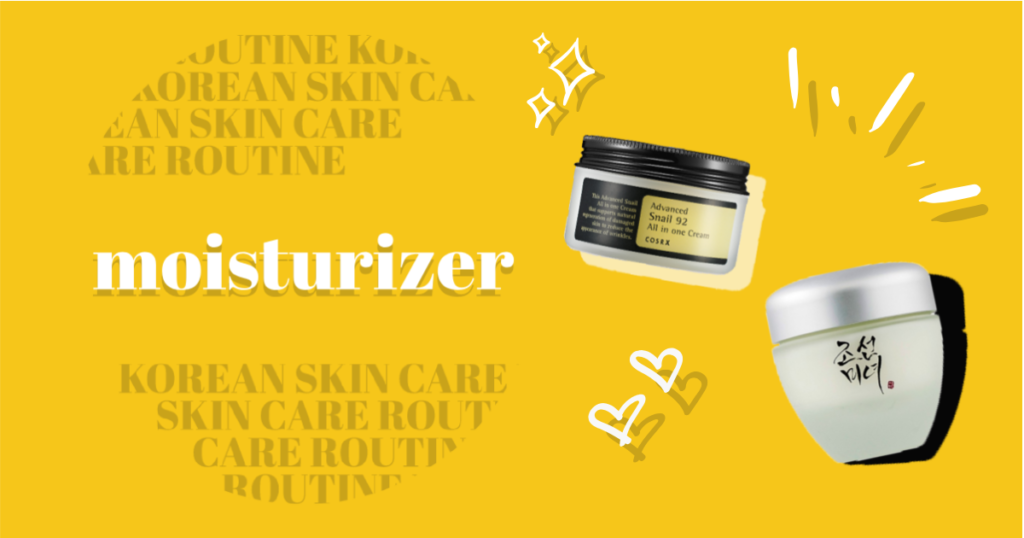
Koreans consider hydrating your skin the most vital component of skin care. Some Korean women even spritz water on their face in between steps in order to keep their skin from being dry for a second! Choosing a good moisturizer is one of the most important steps in your skincare routine.
Even people with oily skin need moisturizers, it’s just a matter of choosing the right one. After all, moisturizers’ main function is to provide hydration and your face producing a lot of oil is not the same as it producing sufficient water. If you try to dry the oil from your face, your body will only produce MORE oil to compensate!
People with oily skin should use lightweight moisturizers that focus more on hydration, while people with drier skin need thicker creams.
Recommended Holy Grails: CosrX Snail 92 All-In-One Cream, Beauty of Joseon Dynasty Cream, Holika Holika Good Cera Super Ceramide Cream
10. Sun Protection
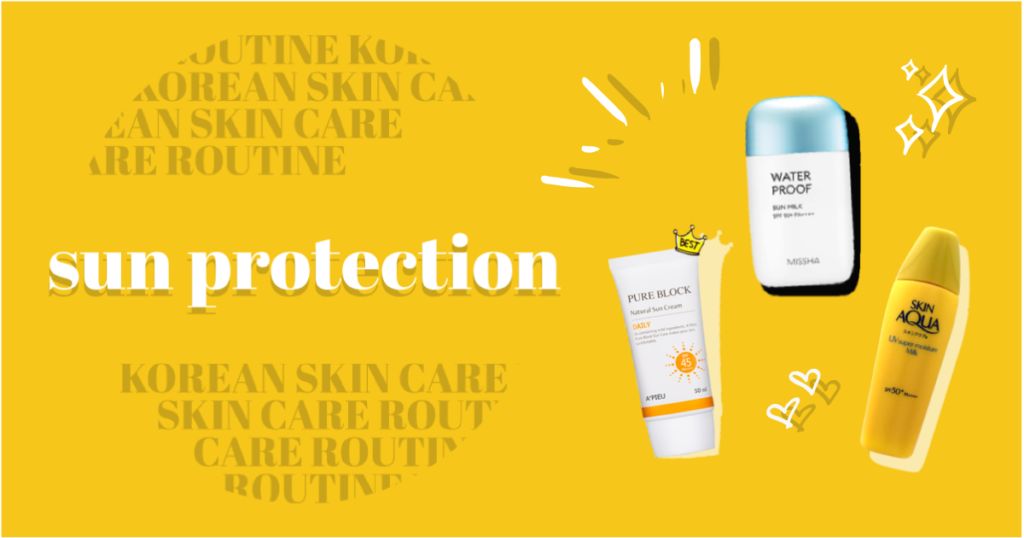
Even dermatologists will tell you that one of the most essential steps to fighting wrinkles and blemishes is to protect your skin from harmful UV rays from the sun. Don’t think you’re safe indoors as well. Those pesky UV rays can pass through windows! Considering we live in God’s oven, you want a sunscreen that’s at least 30 SPF. You don’t need to wear sunscreen at night at least.
Tip: A lot of sunscreens use alcohol so be sure to check the ingredient list before buying!
Recommended Holy Grails: A’Pieu Pure Block Natural Sun Cream, Skin Aqua UV Super Moisture Milk, Missha Waterproof Sun Milk
11. Night Cream/Sleeping Mask
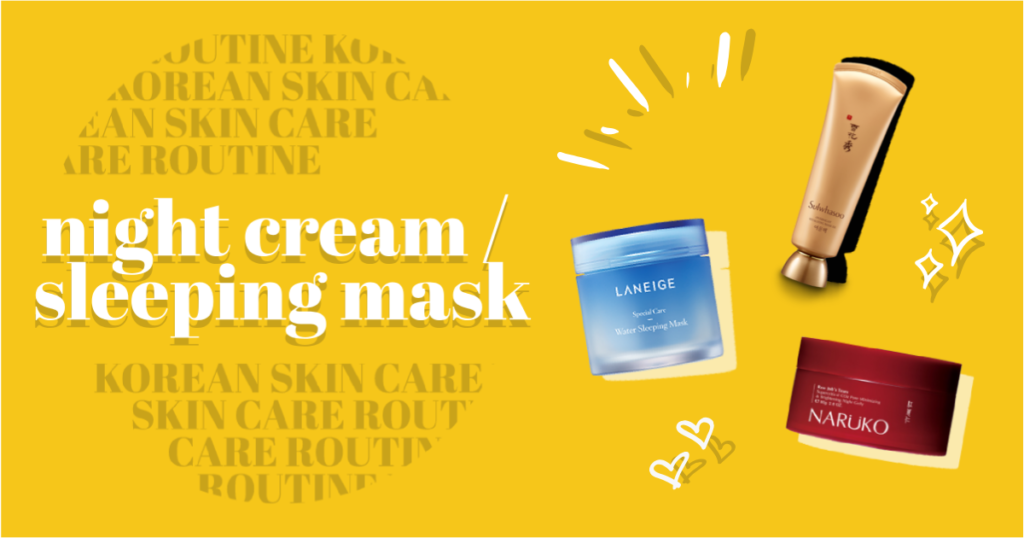
Getting your beauty sleep is a must for great skin, but you can help our face out by using sleeping masks. Some of the popular sleeping masks even have light acids that can exfoliate your skin while you sleep so you can wake up to a glowing complexion. Make sure you only use sleeping masks up to three times a week. Sleeping masks are pretty powerful, and you don’t want to overdo it and clog your pores.
Lastly, night creams are just moisturizers for use at night. They tend to be thicker than your day moisturizer. Night creams are occlusives which means they seal in moisture and the good ingredients from other products on top. If your day moisturizer is hydrating enough, a night cream isn’t necessary but it’s super helpful for an added boost of hydration.
Recommended Holy Grails: LANEIGE Water Bank Sleeping Mask, Naruko Raw Job’s Tears Night Gelly, Sulwhasoo Overnight vitalizing mask
There you have it! All the steps of the Korean skin care routine explained. It’s up to you to test and see which specific products answer your problem. Tell us in the if you have any other recommendations or what your skin care routine is!



